A look at Dominique Ansel's pastry flour

Before I begin baking with this flour, let’s examine what this product is all about. According to the Dominique Ansel website, this premium pastry flour is essentially a T55 flour, a specialty French flour that features a finer grind and lower gluten content compared to standard American all-purpose flour. While it is primarily associated with croissant production, T55 is ideal for more delicate baked goods, such as sponge cakes and pastries. Milled in France by Grands Moulins de Paris, this flour is made from 100% French soft wheat, which contributes to its tender texture.
Although Grands Moulins de Paris may not be a household name in the United States, it is a highly regarded brand in France, supplying one-third of the country’s bakeries with its flour. Dominique Ansel himself is a satisfied customer, stating, "In our kitchens, we use Grands Moulins de Paris flour for many of our pastries, and it helps us achieve that flaky, light, and airy texture."
This flour is recommended for use in pancakes, cakes, cookies, and more. It has a shelf life of 5 to 6 months, which is slightly shorter than that of regular all-purpose flour. However, since it is packaged in a smaller container (750 grams per bag), it shouldn’t be too challenging to use it up within half a year. You can currently purchase it for $8.50 on Amazon (with free shipping) or for $10.50 on the Dominique Ansel website.
Comparing with Bob's Red Mill pastry flour
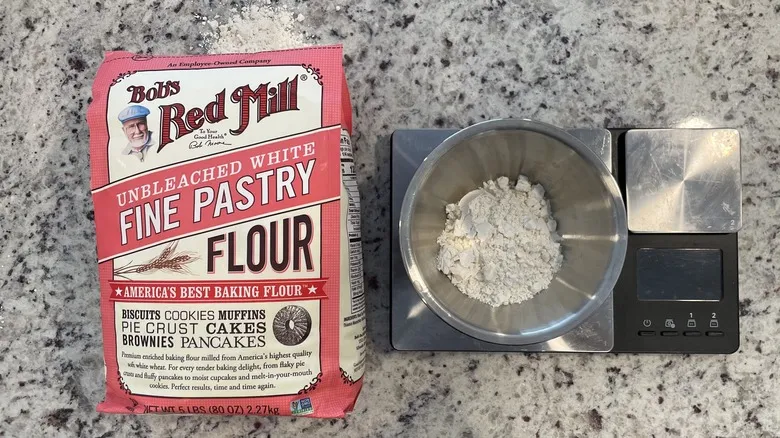
To assess Dominique Ansel's pastry flour, I needed to choose a more budget-friendly and familiar domestic pastry flour for comparison—something readily available at your local grocery store. I opted for Bob's Red Mill Unbleached White Fine Pastry Flour ($13.30 for a 5-pound bag) because it offers quality at an affordable price, and I have had good results with it in the past. I also liked that it was slightly cheaper than the well-regarded King Arthur Pastry Flour ($12.95 for a 3-pound bag).
While the website doesn't specify the exact protein content, a staff member confirmed that it typically falls within the standard range of 8% to 9%. Bob's Red Mill suggests a variety of uses for this flour, including biscuits and brownies, and even recommends it as a fine substitute for cake flour in recipes that require it.
Despite both being labeled as "pastry flour," Bob's Red Mill's product appears to have little in common with Dominique Ansel's version. One is sourced and milled in France, while the other is produced in the United States. Additionally, BRM flour is nearly half the price and more readily available in stores. Notably, it also boasts a shelf life of two years compared to the six-month shelf life of the other pastry flour. With all these differences, how might the two brands perform differently in baking?
The pancake test
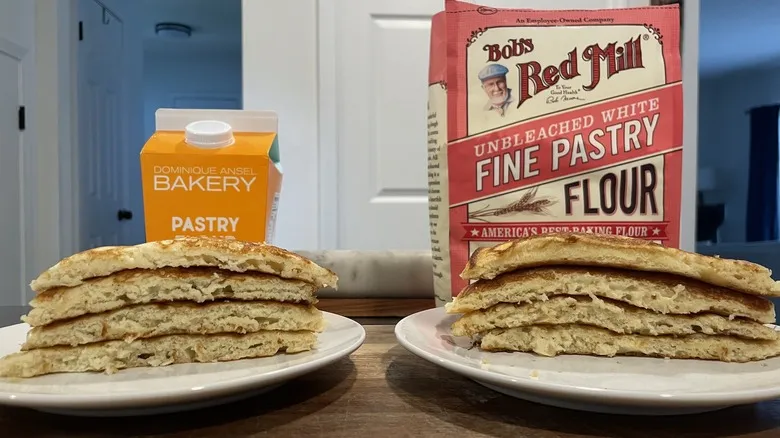
For my initial baking experiment, I chose a pancake recipe featured on the back of the Dominique Ansel pastry flour carton, titled "Fluffiest Pancakes." It seemed like an ideal starting point to assess the flour's performance, as the recipe was crafted to showcase its qualities.
When I used Ansel's pastry flour, I was pleased to find that it mixed smoothly with the buttermilk (the key to enhancing pancakes), melted butter, and eggs, without much clumping—an issue often encountered with coarser flours. The resulting batter had a smooth and loose consistency, just as I anticipated for pancake batter. This mixture cooked up into tall, airy pancakes with a wonderfully tender crumb.
Using the same recipe with BRM flour, I noticed similar behavior, but complications arose when incorporating the buttermilk. The batter turned out slightly thicker than that made with Ansel's pastry flour. This could be attributed to the flour's absorption rate; higher protein content typically leads to greater moisture absorption, which can alter the texture of baked goods. I suspect that the BRM flour had a higher protein level, as it absorbed more buttermilk, resulting in a denser pancake batter. Consequently, the pancakes cooked more slowly and unevenly compared to those made with Ansel's flour. Therefore, Ansel's pastry flour emerged as the clear champion for superior pancakes.
The sponge cake test

My next experiment centered on how the two types of flour would perform in making a sponge cake. I chose a recipe from the acclaimed baker Claire Saffitz, which required both a whipped egg white foam and a whipped egg yolk foam to achieve its airy texture. The amount of flour needed for this cake is minimal (less than a cup), but the specific type of flour is essential. Cake flour is one of the key ingredients for a perfect angel food cake, as it provides a lighter, lower-protein option that helps maintain the delicate bubbles formed by the egg foams. Pastry flour should yield similar results.
When I used Dominique Ansel's pastry flour for this recipe, I was once again impressed by how effortlessly it blended with the wet ingredients, even without sifting. It seems to possess some sort of magical anti-clumping properties. By the end of the baking process, it produced a lovely sponge cake that was only slightly deflated due to a clumsy transfer to the cooling rack.
Interestingly, the BRM pastry flour performed equally well, not weighing down the delicate cake batter and folding in smoothly. While it appeared slightly better than the other sponge cake, that was solely due to my mishandling of the pan. In reality, the cakes had nearly identical texture and flavor. For that reason, I would have to declare the more affordable option the winner, as I couldn't truly detect any difference.
The scone test

Scones (or biscuits) definitely benefit from using pastry flour, as a delicate texture makes a significant difference. I chose a straightforward cream and butter scone recipe from Once Upon a Chef to experiment with two types of pastry flour (though our mixed berry scones recipe is also worth considering). The original recipe called for cake flour, but I believed that pastry flour would be an excellent substitute.
While I had previously been impressed with Ansel's flour, the scone test is where this artisan flour truly excelled. It formed a smooth, pliable dough and baked into an exceptional scone. The phrase "melt-in-your-mouth" may sound cliché, but this dish genuinely deserves it.
On the other hand, the BRM pastry flour did not come together as seamlessly. Similar to the pancakes, this flour absorbed more heavy cream than the Dominique Ansel pastry flour, requiring me to add up to two extra tablespoons of cream to achieve a workable dough. That said, the BRM pastry flour still produced a tasty and tender scone. However, it’s akin to the difference between a feather-down pillow and a memory foam pillow; both are soft, but the memory foam envelops you in a luxurious embrace rather than just resting on a surface. It’s a transcendent experience. For me, the Dominique Ansel pastry flour takes the top prize.
My baking conclusions
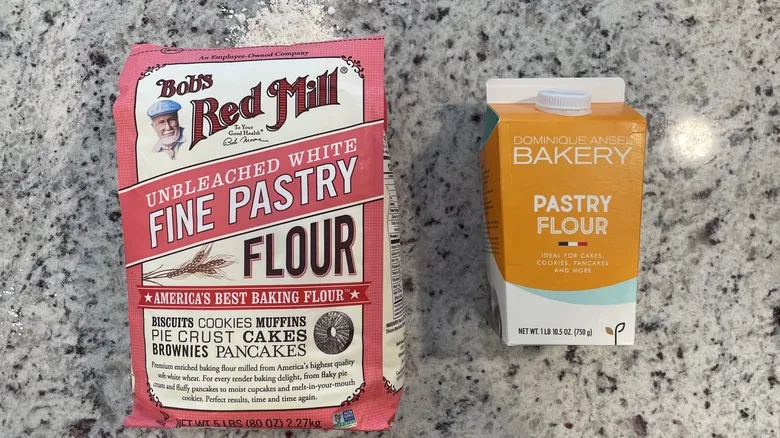
After conducting all this testing, I can confidently say that Dominique Ansel's pastry flour is indeed worth it, but with a caveat. If your goal is to create exceptional scones, biscuits, or pies, this flour is a great choice. Even for making light and airy quick breads or pancakes, I believe this pastry flour surpasses other brands. However, if you're only using a small quantity—like less than a cup for a sponge cake—the difference may not be significant enough to notice.
During my review, I also had some observations about the flour's innovative packaging. On one hand, I appreciate the use of recycled cardboard for the carton, as it provides a more airtight and environmentally friendly alternative to standard paper flour bags. Additionally, the spout opening made it very easy to pour the flour. On the other hand, if I accidentally measured out too much flour, I needed a funnel to return the excess back to the container. While this might seem like a minor issue, given the price of this flour, every gram is worth preserving. Overall, I like the packaging, but it’s not the main selling point for me; ultimately, it’s what’s inside that truly matters.
My methodology

During my testing, I utilized the previously mentioned pastry flours along with standard sugar, eggs, and non-European style unsalted butter. I meticulously weighed each ingredient—because a kitchen scale is an indispensable tool for baking, and I challenge anyone to disagree—ensuring that every baked item received a consistent ratio of components. Each batter and dough was baked in the same pan and allowed to cool on the same rack.
I chose pancakes, scones, and sponge cake because they offer a diverse range of textures in baked goods. Additionally, pancakes serve as an excellent indicator of how the flour performs in making similar batters like crumpets. Scones, on the other hand, effectively represent how the flour behaves in pie dough, biscuits, or pastry crusts.
As for my baking credentials: I have previously served as the managing editor of a baking magazine, where I tested countless recipes. My extensive experience with flour includes working with various brands and types, ranging from the unusual (musty chestnut flour) to the delightful (buttery semolina flour).
Recommended
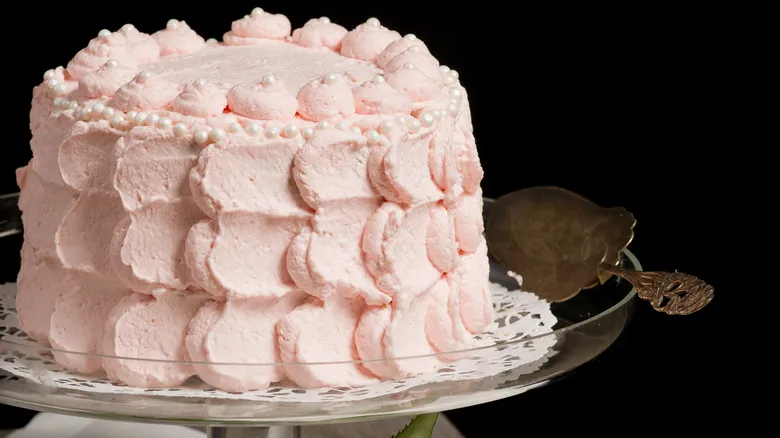
The Prettiest Way To Decorate Your Cake With Just A Spoon And A Bag
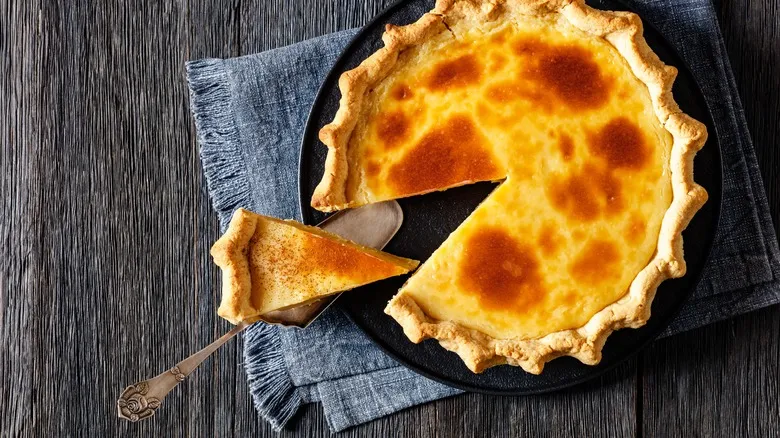
Why You Should Never Store Custard Desserts In The Freezer
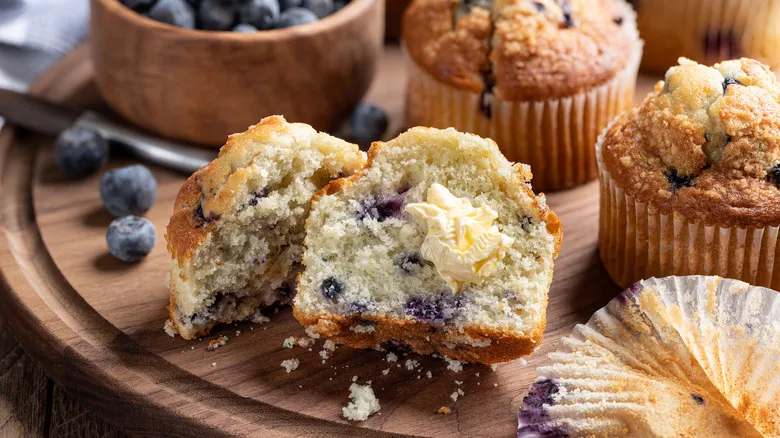
The Butter Mistake That Immediately Ruins Muffins

Top Your Baked Potato With A Hot Dog For A Bonfire Night-Inspired Meal
Next up

